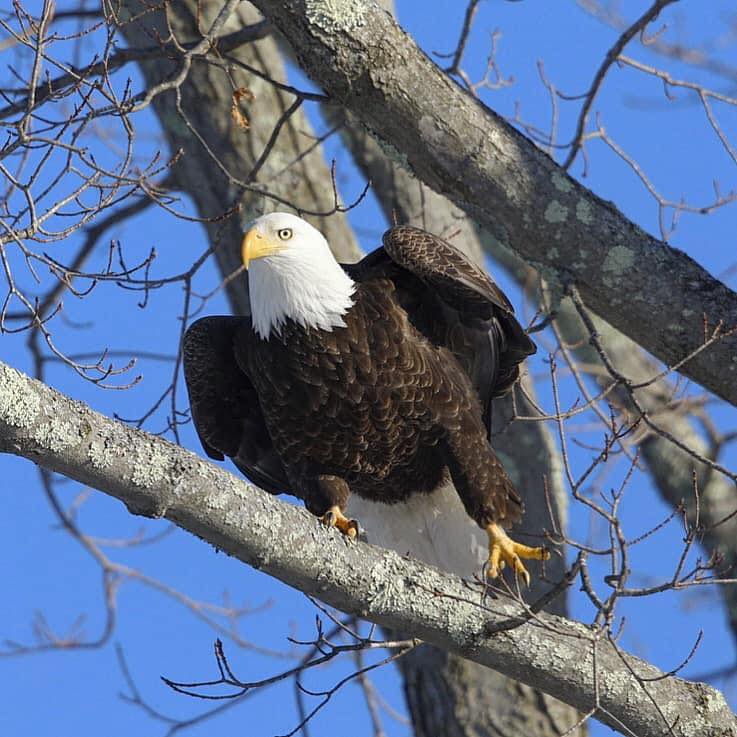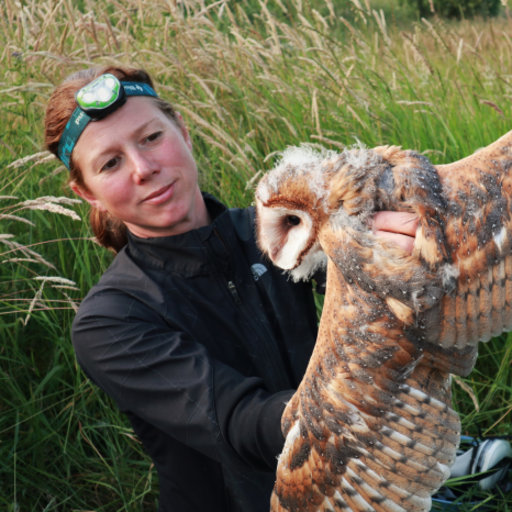by Joe Eaton
(Full article from RATS Tales February 2022)
The owls of British Columbia have few better friends than Sofi Hindmarch, who has studied these nocturnal raptors—mainly barn, barred, and great horned owls—since 2006. As project manager for the Fraser Valley Conservancy, Hindmarch has a lot of irons in the fire: researching land use impacts on barn owl populations, identifying nest and roost sites, analyzing pellets to determine the owls’ diets, using radiotelemetry to track their movements. Second generation anticoagulant rodenticides (SGARs) are a major focus for her: not just documenting exposure, but working with local farmers to reduce their use. (Visit www.barnowlsbc.ca for more information.)
In her recent Zoom presentation for the International Owl Center, “Whooo Gets Hurt By Rat Poisons?”, Hindmarch pulled all those threads of science and advocacy together to report on the state of the raptors and what’s being done to help them. There’s reason for celebration: the provincial government recently imposed an 18-month moratorium on the use of SGARs, and many municipalities have permanently banned their use on city property. But there’s also a great deal of work ahead.
British Columbia has one of the world’s longest-running data sets of raptor exposure to SGARs, with liver samples from 746 owls, hawks, falcons, and eagles found dead or dying from 1988 through 2018. Hindmarch said the project began with owls, expanded to include hawks and falcons in 2004, and more recently started sampling bald eagles, of which she said mainland British Columbia has the world’s largest concentration. The results are dramatic evidence of the prevalence of SGARs. Most species tested positive for three SGARs: bromadialone, brodifacoum, and difethialone. “Almost a hundred percent of the barred owls had one or more SGARs,” Hindmarch noted. SGAR prevalence was almost as high in red-tailed hawks and great horned owls, and lower but still significant in barn owls. That makes sense, given those species’ rodent-based diets. Surprisingly, two bird-eating raptors, the Cooper’s hawk and peregrine falcon, also had high prevalence; their smaller relatives, sharp-shinned hawks and merlins, scored lower. Over half the 35 bald eagles sampled had SGAR residues. The lowest scorers were snowy owls and short-eared owls, temporary visitors to British Columbia, and northern saw-whet owls, mostly collected in the island wilderness of Haida Gwaii where human impact is limited. Barred and great horned owls and red-tailed hawks also had the highest concentrations of SGARs in their bodies.

How are the bird-eating hawks and falcons being exposed? Hindmarch mentioned European studies that showed songbirds consuming SGARs in bait boxes: “House sparrows will happily jump into bait stations and peck at the bait.” Invertebrates like slugs and beetles are also attracted to bait stations and might be eaten by birds that are eaten by raptors, resulting in tertiary exposure. Bald eagles, for their part, forage in open landfills where poisoned rodents and moldy but still lethal baits are discarded.
Hindmarch also found relationships between land use and rodenticide exposure, at least for some species. Land around the locations where 393 raptors were collected was categorized in terms of residential or agricultural use. While exposure in red-tailed and Cooper’s hawks didn’t vary with land use, exposure to bromadiolone—the only SGAR approved for outdoor use—in great horned and barred owls was significantly influenced by the amount of residential development within their home ranges. At the other extreme, AR residues have been found in mammals—badgers and fishers—in remote forested areas where there are mining and logging camps.
Barn owls and barred owls have complicated histories in British Columbia. Previously uncommon, barn owls flourished in the southwestern part of the province in the second half of the 20th century, perhaps aided by milder winters and increased availability of nest sites and foraging locations as farming expanded. Subsequent declines made them a species of special concerns in the province. Hindmarch said some are holding on in areas recently converted from agricultural to residential use. The barred owl, historically an eastern bird, was first recorded as nesting in British Columbia in 1946 and has colonized cities like Vancouver and Victoria. “Barred owls in urban environments feed almost exclusively on rats,” Hindmarch said. But they can be bad news in wildlands, competing with, hybridizing with, and preying on their endangered relative, the northern spotted owl. Barred owl predation on western screech-owls and northern pygmy-owls is also a concern. Barred owls in cities and barn owls in agricultural lands are both vulnerable to SGAR poisoning; studies have shown that barn owls hunting near baited farm buildings run higher risks. Hindmarch also raised the issue of sublethal SGAR effects in urban owls: “They could be an additional stressor to populations that are already challenged on so many levels.”
The fate of urban owls triggered a public outcry that led to the provincial government’s action, according to Hindmarch: “People were finding dead owls in their parks. These are the neighborhood owls. They have names. It can be devastating if the great horned owl you’ve known for decades shows up dead.” In rural areas, she’s trying to persuade blueberry growers that owls can be an effective part of integrated pest management. She said Israel, with the world’s highest density of barn owls, has an exemplary program that she’s trying to replicate in British Columbia. Barn owls can exercise effective top-down control on crop-raiding voles if nest sites are available. Hindmarch works with the Cascade Box Group to get owl boxes installed on farms, and encourages growers to focus on habitat modification to reduce vole abundance, placing barriers around plants and keeping grass around crop fields short. Urbanites can also take preventive steps: eliminating food sources and hiding places for nuisance rodents, keeping trash and compost contained, policing bird feeders.
“We need to control rodents holistically,” Hindmarch concludes. “There’s no silver bullet.”

